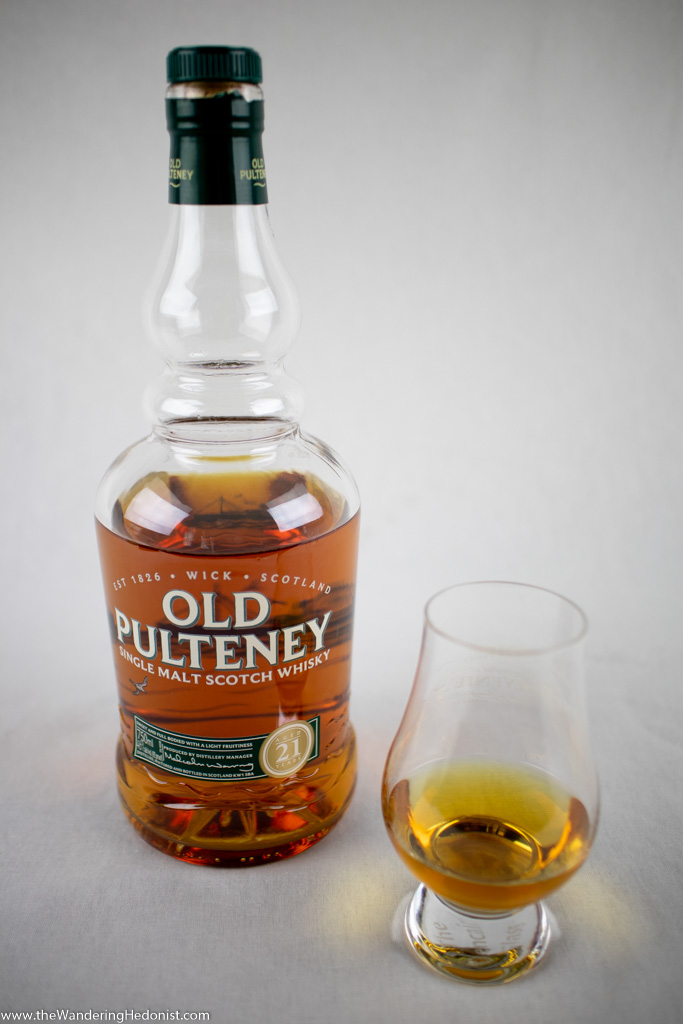Scotch
Scotch is a subclassification of whisky that must be made in Scotland using only water and malted barley (to which only whole grains and other cereals can be added), matured in oak casks for no less than 3 years. This product can optionally be finished in other barrel styles like sherry and port casks to slightly alter the flavor. But that’s about it. The vast range of flavors come mainly from the local water, the method in which the barley is malted, and the location of aging which may take on environmental factors like the sea mist.
There are different subclassifications of Scotch including single malt, single grain, and blended varieties. For the purpose of this article I’m referring to single malt Scotches which are produced with only water and malted barley at a single distillery in pot stills.
Regions:
There are four primary recognized Scotch regions in Scotland: the Lowlands, Cambletown, Islay, and the Highlands. The highlands includes most of the North of Scotland including the islands aside from Islay and has two well know subregions: Speyside and the Island regions scattered around the country, specifically: Arran, Jura, Mull, Orkney, and Skye, with their respective distilleries: Arran, Jura, Tobermory, Highland Park and Scapa, and Talisker.
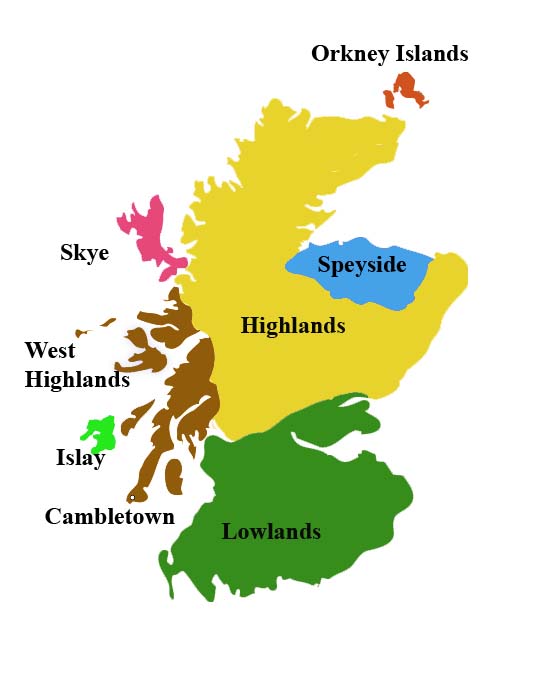
What I like:
I’ve been seriously drinking scotch now for about 8 years. I was never a whiskey drinker but I joined a whiskey club at work and once a week for the past 8 years have had the chance to sample 3-4 new whiskeys, from rot-gut to $500 Scotches, and have really gotten a taste for it. That paired with my hobby of obscure collections has got me spending way too much money on liquor. But I consider it a library of sorts for my friends to sample.
I prefer to drink my Scotch neat. When I’m trying a new Scotch I will start neat, then add a few drops of water, then a bit more, and a bit more. Just to see how the flavors change and if I can unlock any hidden secrets. But I almost always revert to a neat pour, even at cask strength.
There’s no particular style I prefer over another. I love dirty smokey Islays, clean and sweet highlands, and the balanced complexity of an Island or Cambletown. I have my favorites which I will call out and definitely more than a few that I don’t like. But it’s all very personal. To me there’s no wrong or right or snobbery when it comes to Scotch. Just drink what you enjoy!
The issue of glasses can be taken seriously. We’ve gone through all manner of specialty glassware in the club and personally I prefer the Glencairn glasses for their nose. It really doesn’t matter, but it helps to pick one and stick to it to really create a basis of comparison. The glass, presence of water, and temperature of the liquor can change the flavor considerably, so be mindful.

Cambletown
Cambletown is a small southern coastal region to the east of Islay but to the west of the lowland region. Once having over 30 distilleries it now has only 3: Glen Scotia, Glengyle, and Springbank, the primary exporter being Springbank.
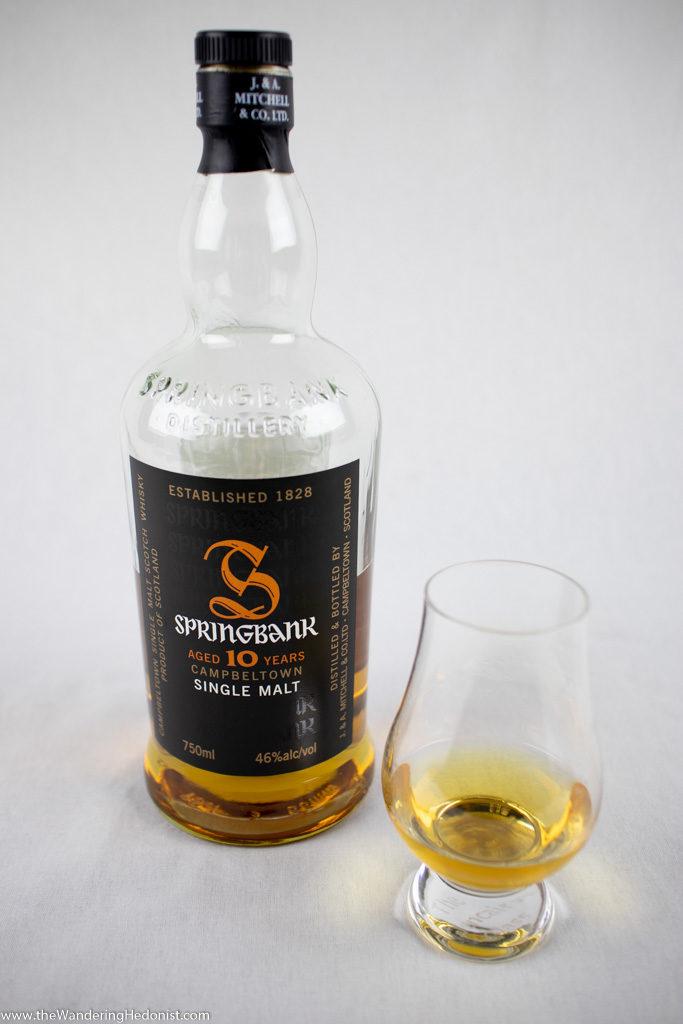
(Favorite) Springbank 10
Springbank is an interesting complex blend of flavors, not too overpowering, with the taste of the sea and a hint of peat. Very drinkable at this age. The older offerings increase sharply in price so I tend to gravitate to this younger product.
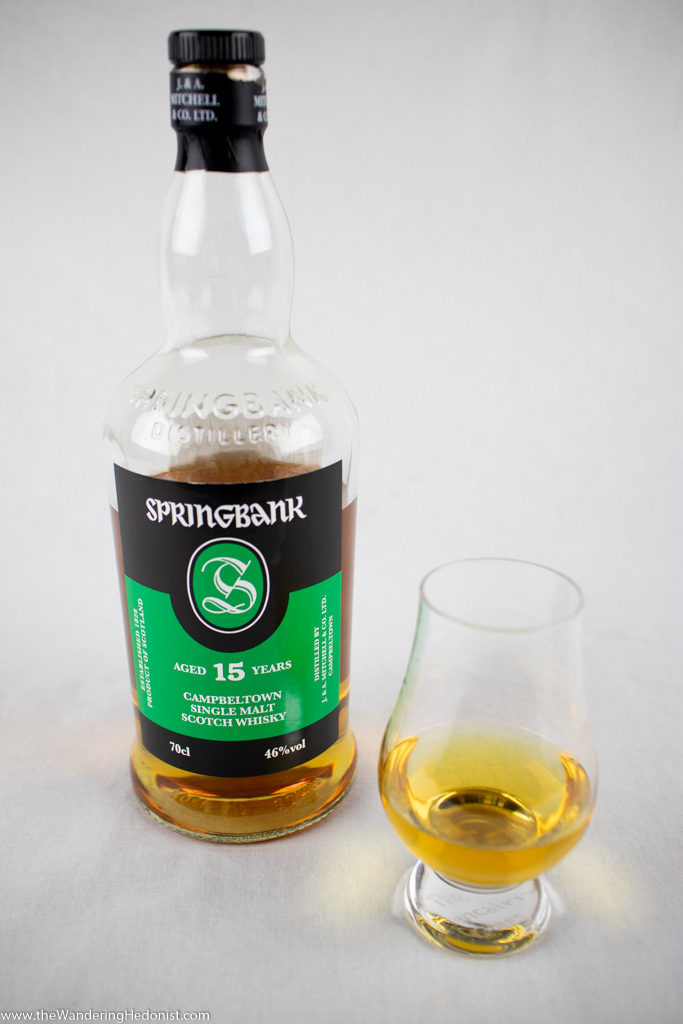
(Favorite) Springbank 15
This is a splurge for me. It takes the 10 to a new level. Well worth the investment if you like the 10 as much as I do but for the price the 10 works just fine for me.
Islay
Unique from the other Scottish islands, the Islay southeastern island region supports 8 distilleries with a unique flavor profile which is typically smoke and peat forward. Ardbeg, Bowmore, Bruichladdich, Bunnahabhain, Caol Ila, Kilchoman, Lagavulin, and Laphroaig.
The first Islay scotch I had was an Ardbeg 10. I could smell the bottle being opened from across the table. It didn’t just smell like a campfire, it smelled like an entire weekend campout. The dirt, the rocks, the cloying smoke that you can’t scrub out of your clothes, the wet trees. It was way too strong for me at first. But over the years I’ve developed a taste for the smokey Scotches and now it goes down smooth.
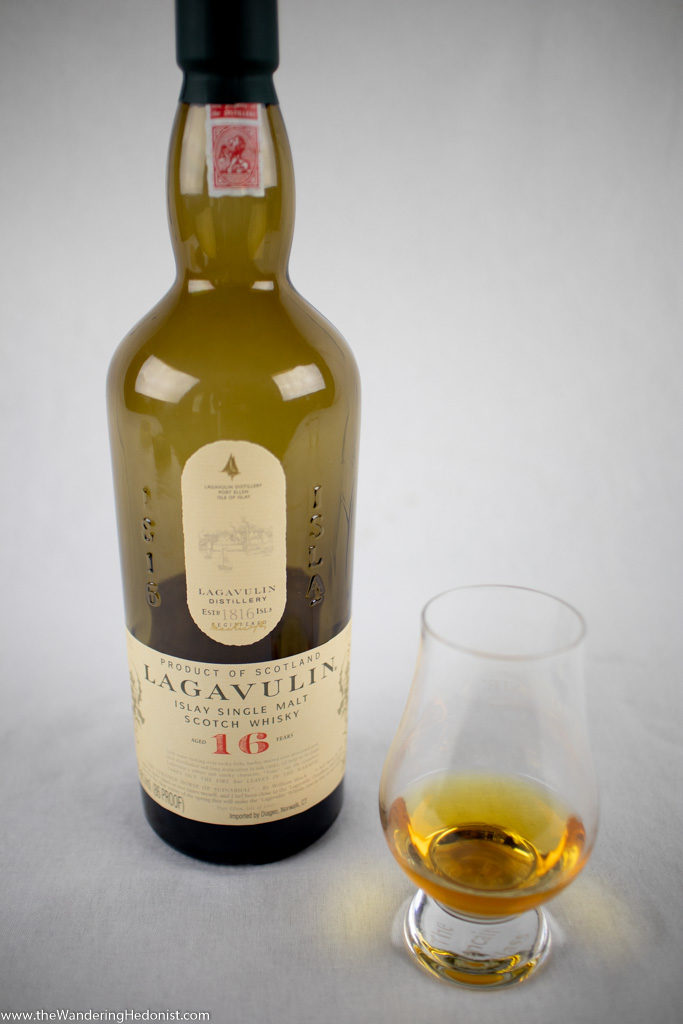
(Favorite) Lagavulin 16
My go to Islay Scotch. Complex, smokey, layered. Peat forward, sweet, salty, bitter. This is all the things I love Scotch for. Compared to many of the sweeter Scotches I like, this one is quite manly. It’s no coincidence that this is the Scotch of Ron Swanson. The bold flavor of this Scotch takes a while to mature. Unlike most Scotches I recommend this older statement over the 8 year which is good but hasn’t fully come into it’s potential.

(Favorite) Lagavulin – Distillers Edition.
This edition takes the Lagavulin 16 and finishes it in a PX sherry cask to accentuate the sweet and fruity notes. It takes the more earthy edge off and really rounds it out. I love this edition but it’s over $100 so it’s an indulgence. But try if you can find it.

(Favorite) Kilchoman – Machir Bay
Kilchoman is a relatively new distillery on Islay started in 2005. The primary offering, Machir Bay, has a bold smoke with an equally sweet base, vanilla and fruit notes throughout. I discovered this Scotch while planning a Scotland trip and it’s been one of my favorites ever since.

(Favorite) Kilchoman – Loch Gorm
This specialty release is fully matured in sherry casks bringing its rich fruit flavors to the forefront. Intensely smoked peat, dark cherries, roasted clove, and like the Machir Bay, a sweet smokey finish. The Kilchoman special releases are prohibitively expensive ~$150-$200. But great if you can get the inside hookup.
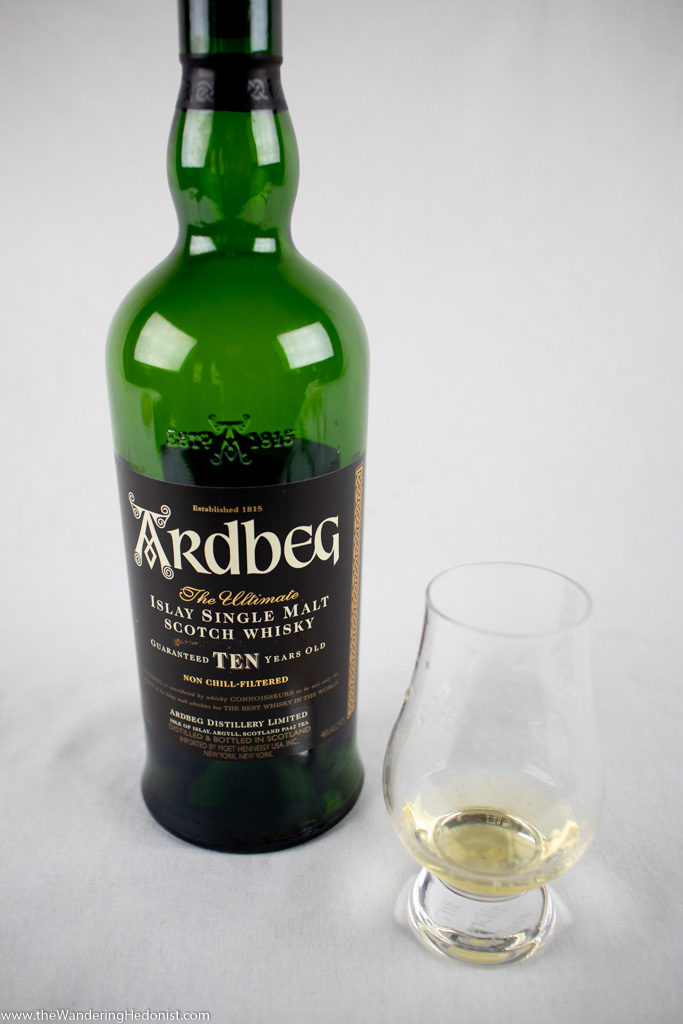
Ardbeg 10
Young, smokey, it’s a hammer of smoke, it’s a palate bomb. Save this to the end of the flight. I used most of my bottle making smokey mustards as xmas gifts. I don’t find myself drinking this all by my lonesome but it has its place. I hear the high age editions mellow quite well but I haven’t tried them myself.
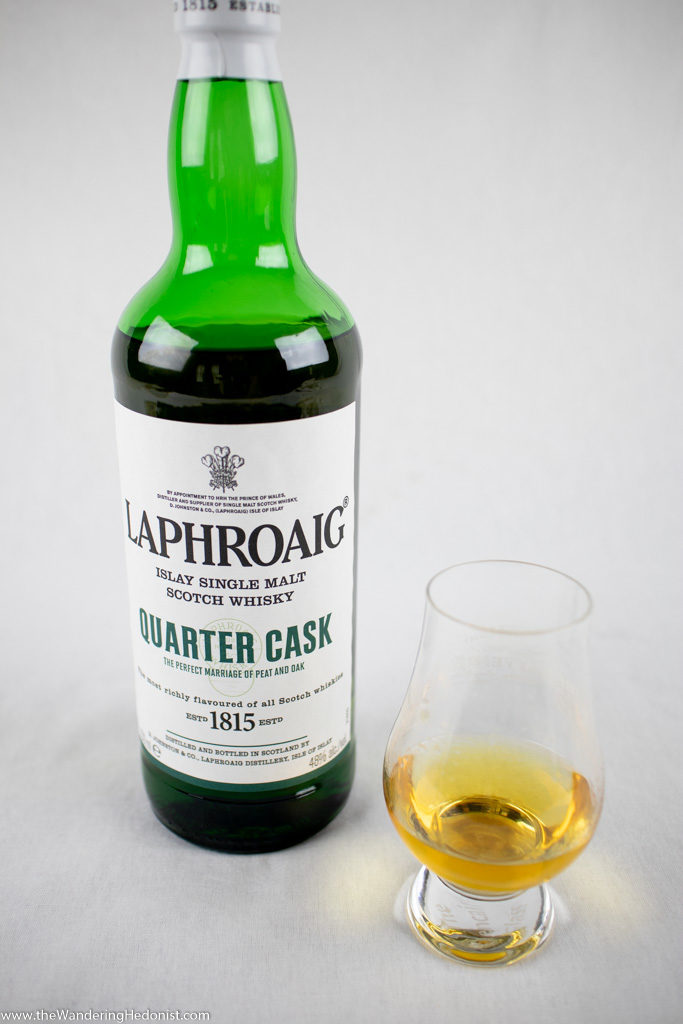
Laphroaig – Quarter Cask
A young Scotch that’s had it’s aging sped up by using a smaller cask thereby increasing the exposure to the oak. It’s smoother up front than the typical Laphroiag but the middle and end are still a massive peat bomb. Earthy, peaty, and fairly light in the mouth. Worthwhile if you adore peat.
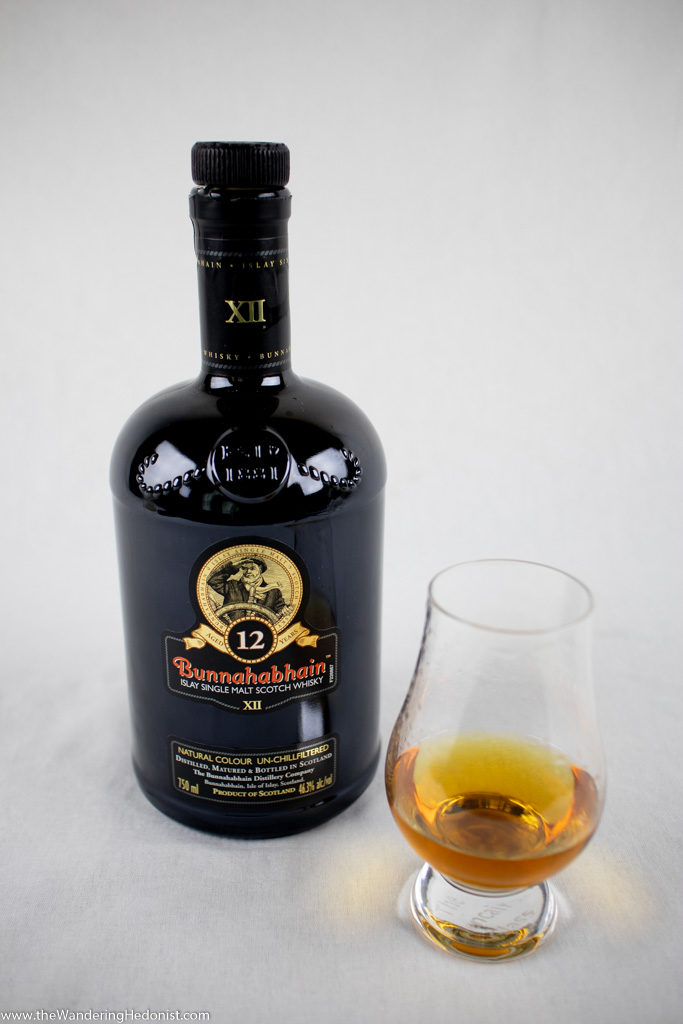
Bunnahabhain 12
The Bunnahabhain distillery sits at the most northern portion of Islay across from the Isle of Jura. Smokey and woody, water brings out creaminess and thick dark cherry. Decent but not usually the first on my list.
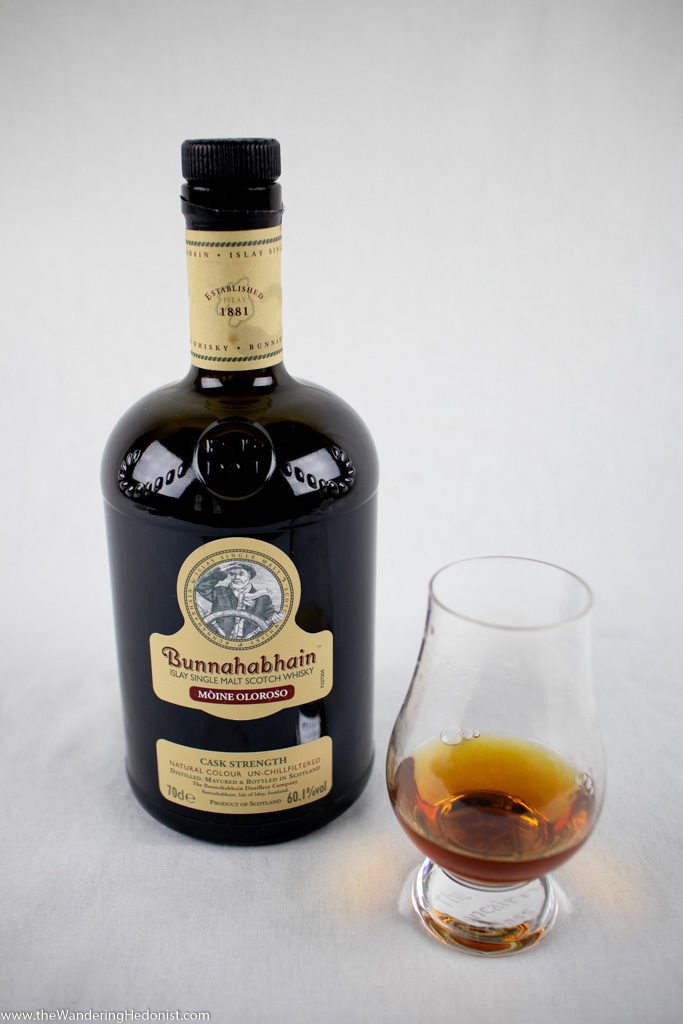
Bunnahabhain – Pedro Ximinez
Aged in PX casks, this edition adds more fruit to the syrupy mix. Raisins, honeyed nuts, toffee.
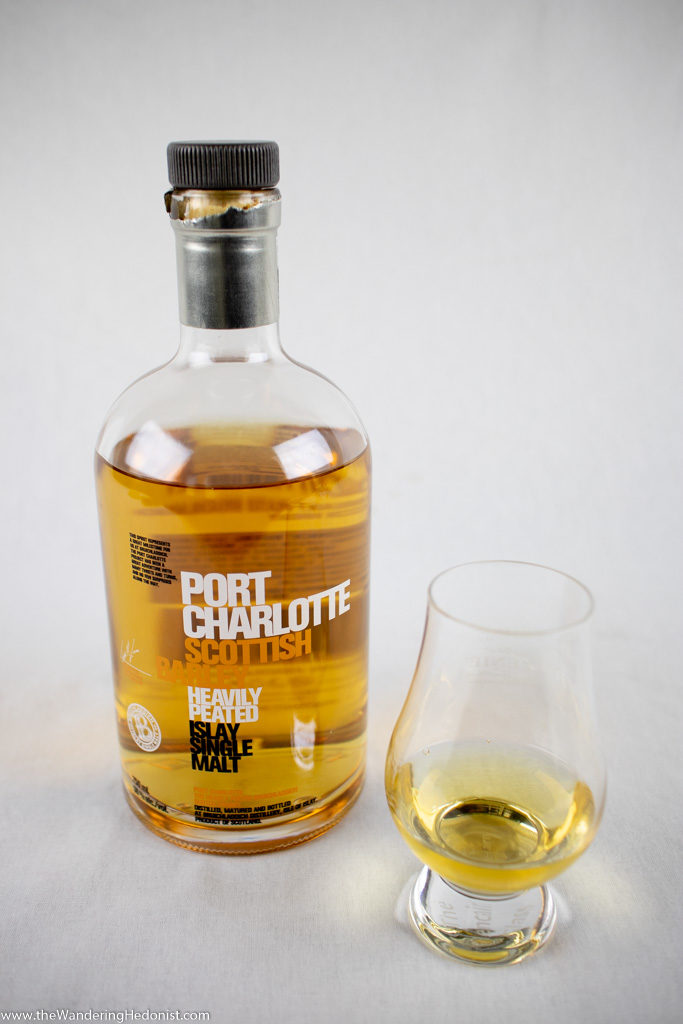
Bruichladdich – Port Charlotte – Scottish Barley – Heavily Peated
Bruichladdich actually has a large variety of styles, a very experimental distillery. This version is very heavily peated but not a smoke bomb like Ardbeg with light floral notes. They’ve chosen to use only barley grown in Scotland.
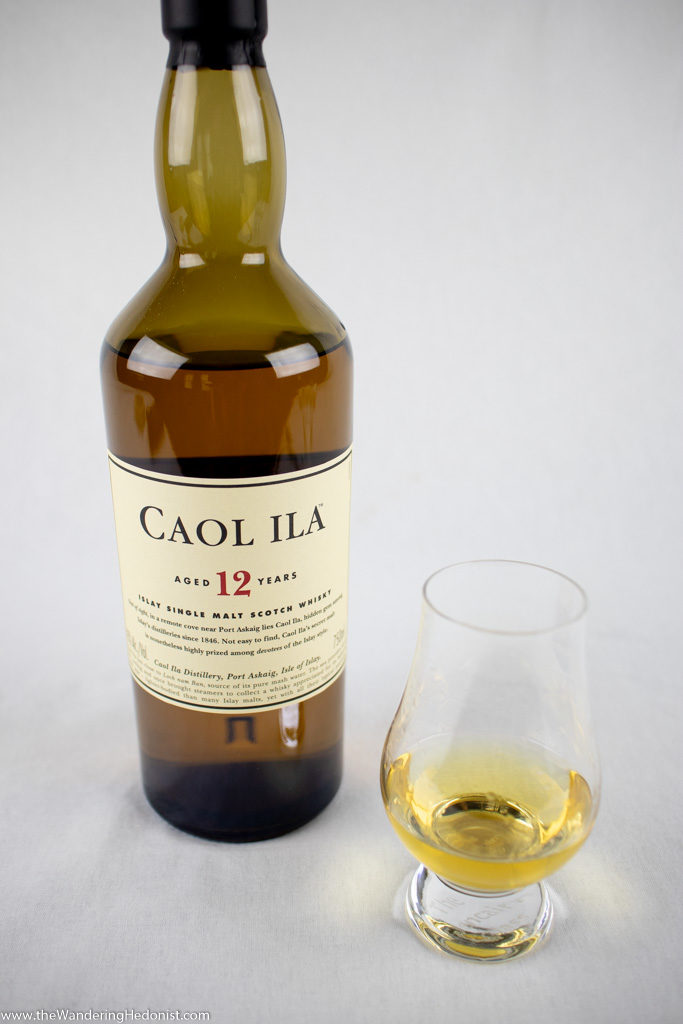
Coal Ila 12
Another north Islay spirit, Coal Ila is definitely unique. Probably my least favorite in my collection, I would describe the taste as having hints of burning electronics and the whiff of ozone. It’s strange and challenging but I know people who love it.
Highlands
The highlands have the broadest variation of flavor profiles. I prefer to think of it in its subregions. Let’s talk about the outliers before we get to the more well known.

Oban – Distiller’s Edition
Traveling north from Islay to the Highlands via Loch Ness you pass through the town of Oban. Oban single malt is technically a highland but stylistically falls between island characteristics and the sweeter northern styles. Sometimes called a “western highland” The standard Oban offering is well balanced and drinkable but I opted for the less common Distiller’s Edition which is finished in Montilla Fino sherry casks.
Orkney Islands
Scotland is surrounded by islands and are home to some unique Scotches. The northern most island region in Scotland is the Orkney islands and the most northern Orkney distillery is Highland Park. One of my favorite scotches, HP is complex and balanced with sweet fruity notes, light smoke and earthiness, and salty sea notes. Very drinkable and it comes in a variety of offerings.
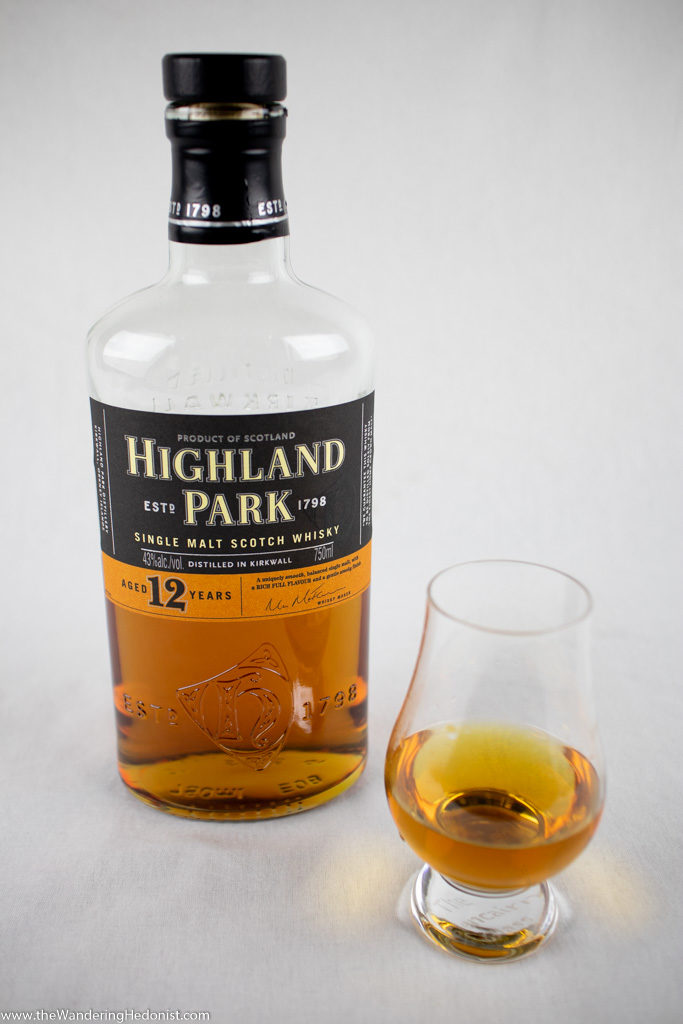
(Favorite) Highland Park 12
Highland Park to me has one of the best all around balances. A mix of smoke, fruit, and the sea, a superb drinkable dram. It has remained in my top 5 since my first taste. It’s more expensive than the more southern Old Pulteney, but a must have for any serious Scotch collection. The 12 is exceptional and the best value in the line. ~$55
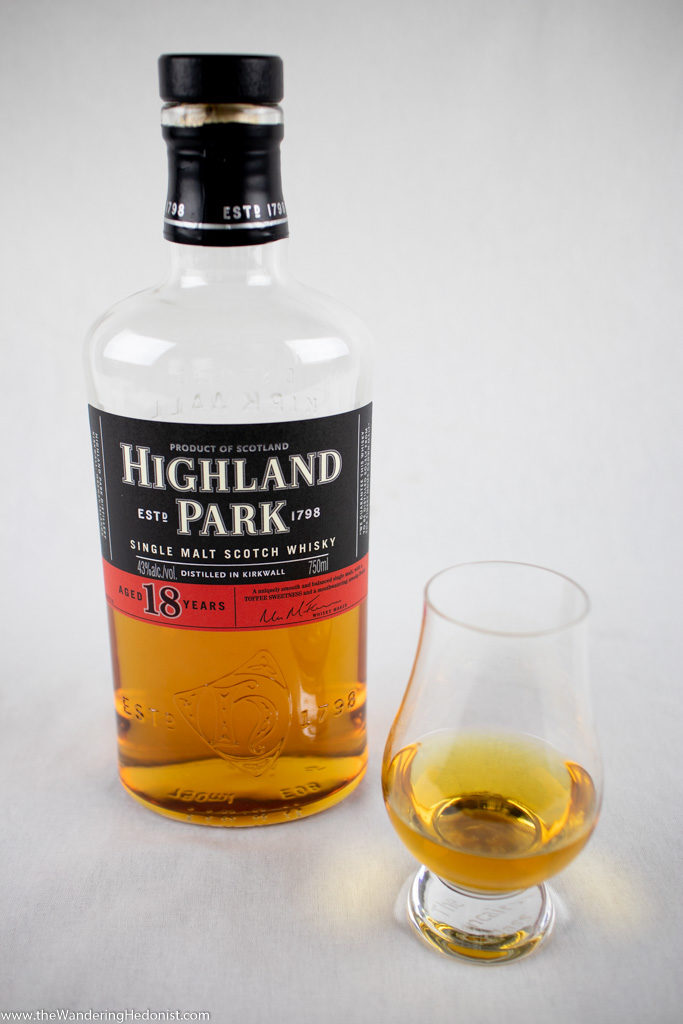
(Favorite) Highland Park 18
An exceptional Scotch. One of my favorite special occasion drinks but the cost is prohibitive. If you’re a huge fan of Highland Park 12 I highly recommend. It matures into an even better balance. But at nearly 3x the price it’s a luxury. ~$150
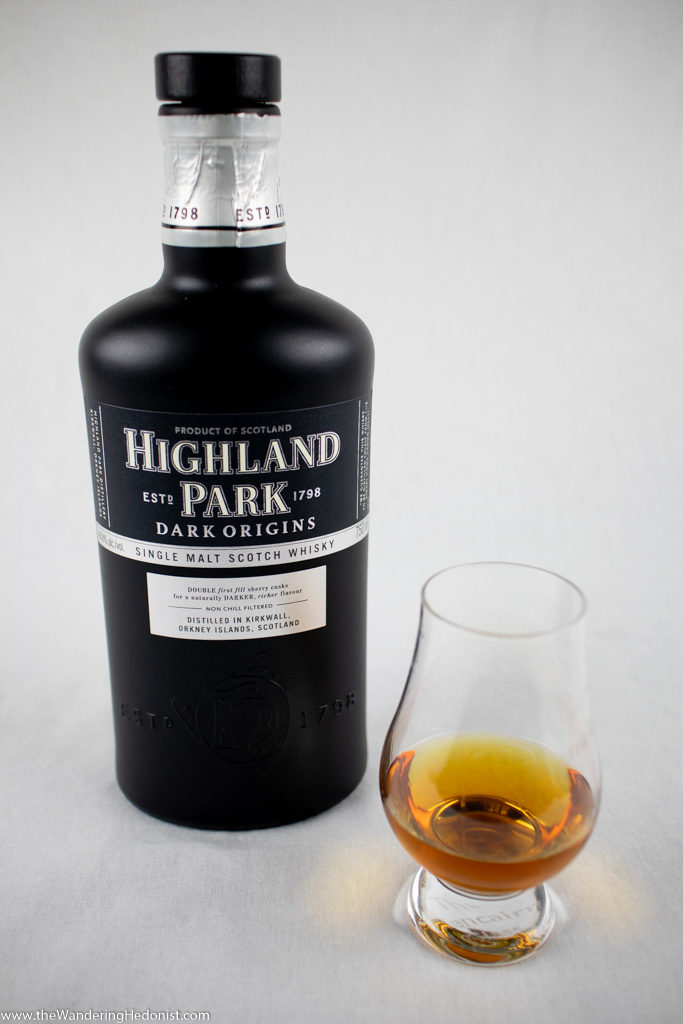
(Favorite) Highland Park Dark Origins
“A sherried release from Highland Park, Dark Origins is a combination of 80% first fill sherry casks (of which 60% is European oak and 20% American) and 20% refill sherry.” This edition takes the smooth well rounded balance of the 12 and hammers on a sweet grapey finish. It’s delicious and hard to stop drinking. And for only a little more than the 12 you get a surprisingly different profile.
Flying south to the mainland you arrive at the most northern distillery of the non-island regions in the town of Wick, Old Pulteney. This Scotch differs from the more popular Highland Scotches by nature of its coastal location, adding layers of salt and sea into it’s sweet profile.

(Favorite) Old Pulteney 12
Probably the best value in scotch in my opinion. The 12 year variety has an outstanding flavor profile at a reasonable price. A complex balance of sweet, smoke, peat, and salty. The 12 is fruit forward (citrus, banana, apricot) with only light undertones of smoke and barely any peat, and clear influences by the sea. I could drink this every day. I’m not sure why it’s not more popular. less than $50

(Favorite) Old Pulteney 21
Heavenly. The OP 21 marries spirits aged in both bourbon and sherry casks which boosts even further the fruit in rich vanilla and apricot and further mellows the balance of mild smoke and brine. This expression was awarded the 2012 World Whisky of the Year by the “Jim Murray’s Whisky Bible.”, only the second Scotch single malt to do so.
Speyside
The north central region of the Highlands houses an unusually large number of distilleries and is prized for its sweet and delicious spirits. This region produces the most commercially successful spirits including Glenlivet, Glenfiddich, the Balvenie, and MacCallan to name a few. I have somewhat of a block against these Scotches but I admit for no good reason, mostly due to their ubiquitous popularity. When I’ve had them I’ve enjoyed them all.
Generally Highlands and specifically Speysides have a lighter and sweeter flavor profile. Lots of honey and fruit, a clean cereal or beer type body, with almost no smoke or peat elements.
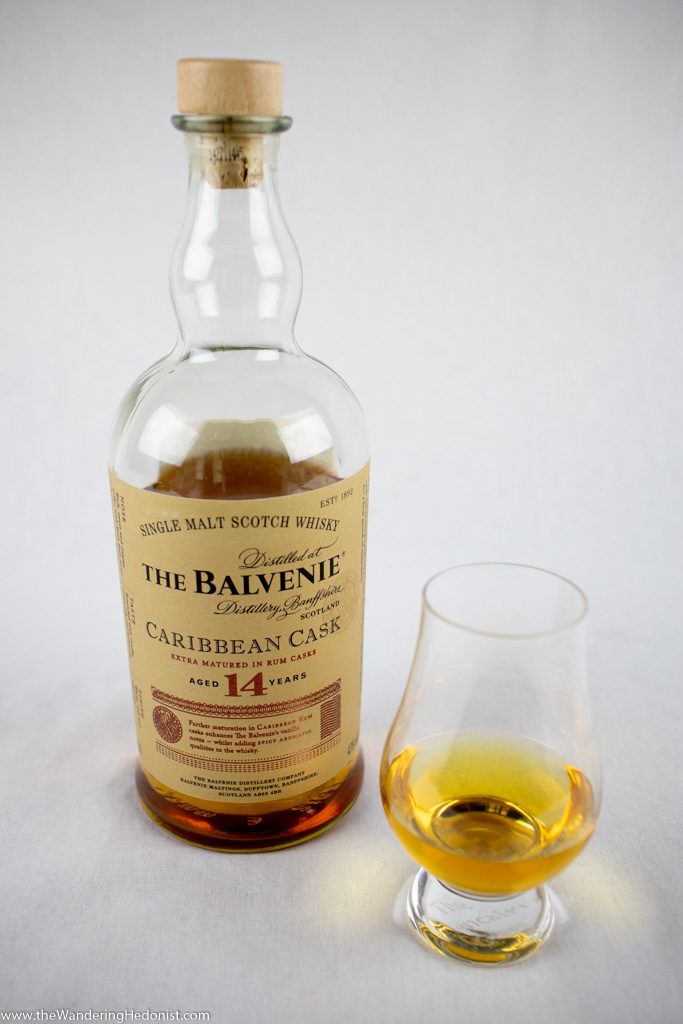
The Balvenie – Caribbean Cask – 14
The Caribbean Cask is my favorite offering from the Balvenie. Known for sweet and accessible whisky, this expression is no different. Aging in rum casks, the spirit takes on a sugary sweetness that is divine. The Balvenie’s ambassador told me that their whisky is meant to be drunk with a good splash of water to create a coating mouthfeel indicative of their line. But I still drink it neat.
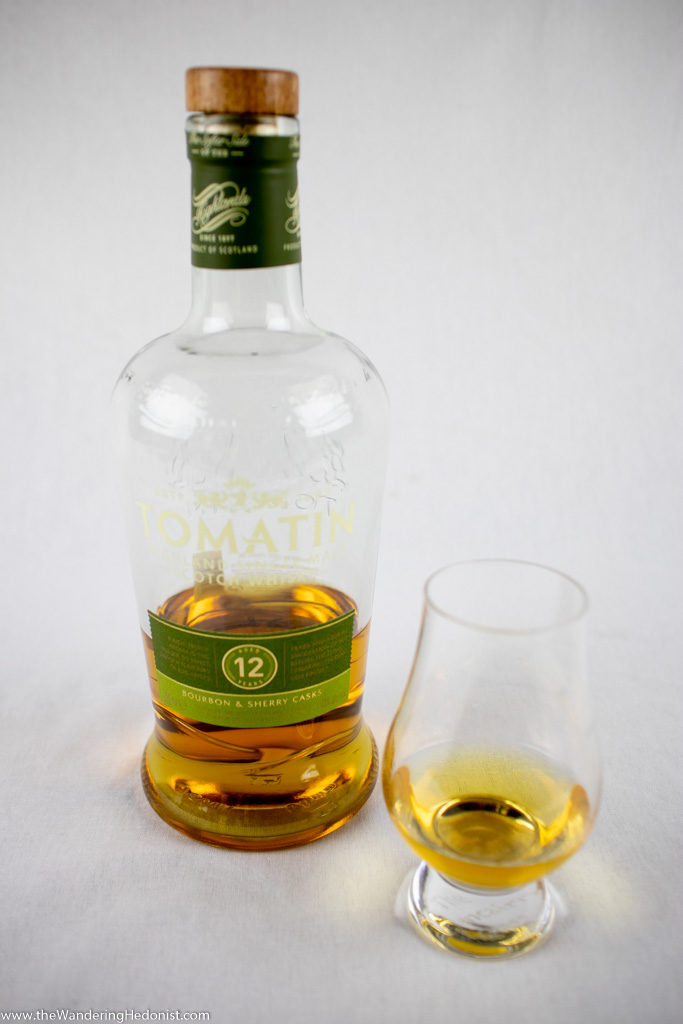
Tomatin 12
Fairly straightforward Speyside. Sweet and honey-like. Easy to drink. Not as complex as southern Scotches but enjoyable and delicious. Reasonably priced.
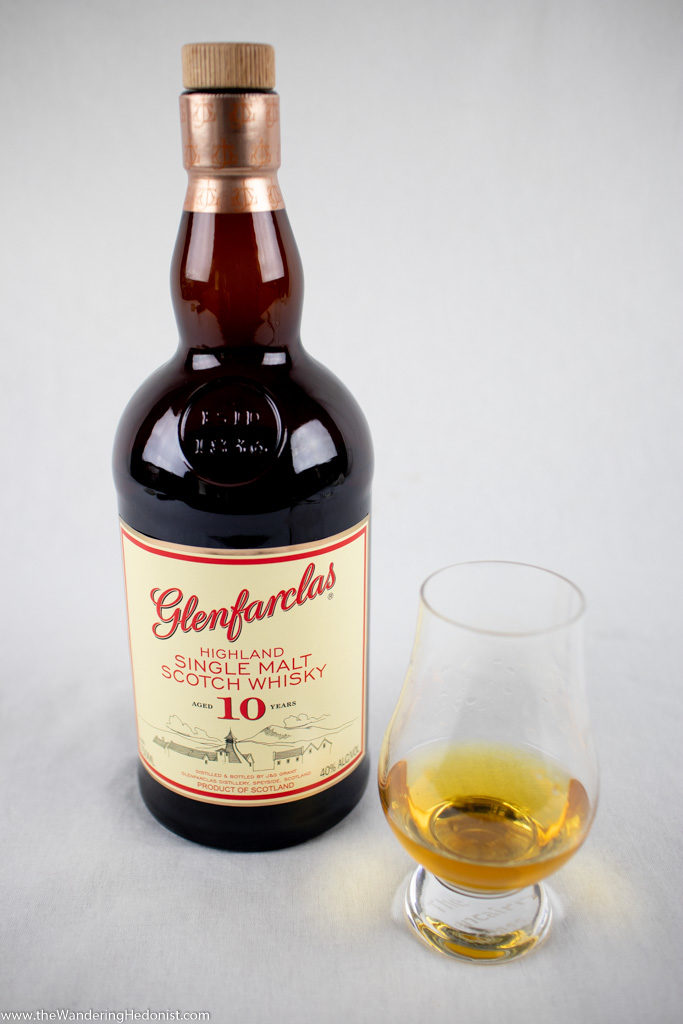
Glenfarclas 10
A solid Scotch. Easy to drink, good balance. Indicative of other Speysides like Glenlivet. Not entirely remarkable but I wouldn’t say no to a glass.

Cragganmore 12
Sweet like the Tomatin but with more pronounced cereal notes. Tastes kind of like beer to me in the finish. Decent.

Glen Dronach 12
Another sweet speyside but finished in sherry casks so the color is dark and has a nice grapey flavor. Heavy PX note on the start becoming more buttery and raisiny as it finishes. Quite good for the money. ~$60.
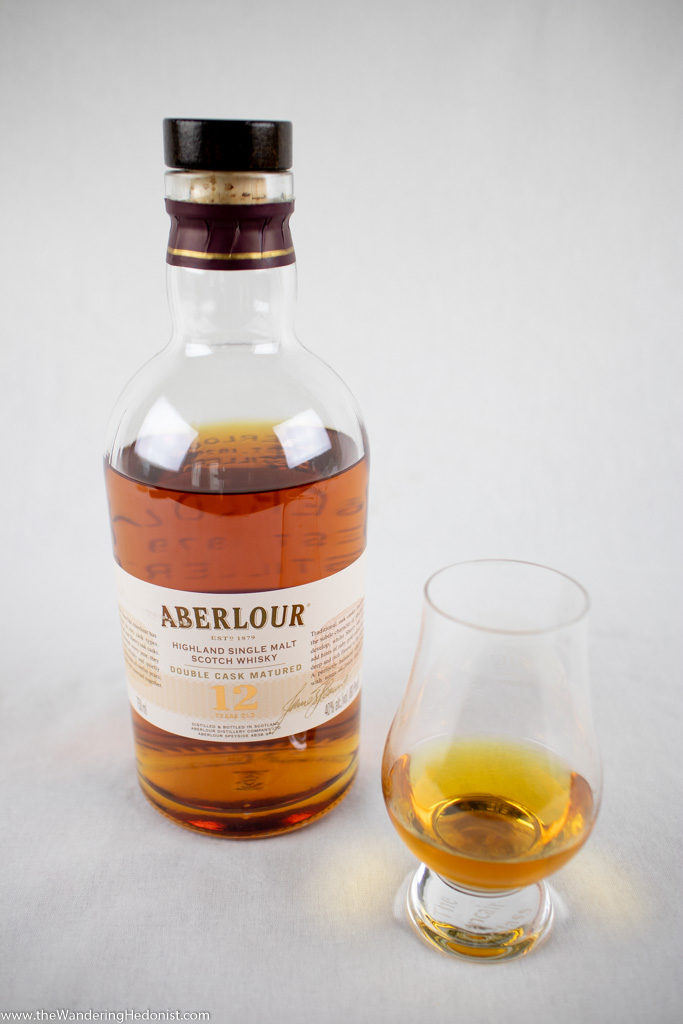
Aberlour
Spicy with dark fruit. Double cask matured in both bourbon and sherry. It takes a little while to open up so let it breath in the glass for a bit.
Lowlands
I’m honestly not too familiar with the lowland whiskys. It’s been on my list to explore. I do have the last dregs of this young Auchentoshan.
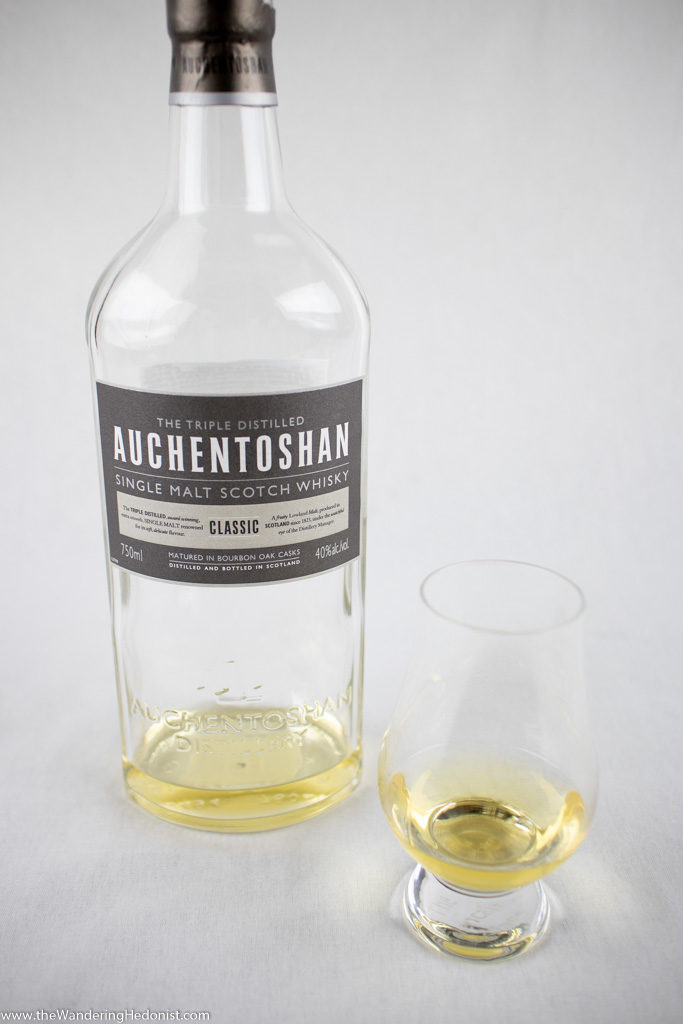
Auchentoshan – Classic
“Fruity with typical Auchentoshan refinement. White peach and crème anglaise.”
Japan
One of the global consumers of Scotch is Japan. Not only have Japanese distributors been buying Scotch distilleries both to distribute single malts and to use in blends, these companies produce a range of scotch style domestic whiskies that deserve a mention.
Of these perhaps Suntory is the most well known owning these Scotch brands (Ardmore, Auchentoshan, Bowmore, Glen Garioch, Laphroaig, McClelland’s, Teacher’s), these whiskies (Jim Beam, Baker’s, Basil Hayden’s, Booker’s, Knob Creek, Maker’s Mark, Old Crow, Old Grand-Dad, Jim Beam Rye, Knob Creek Rye, Old Overholt, (ri)1), Centenario, Courvoisier, Cruzan rum, tequilas (100 Años, El Tesoro, Hornitos, Sauza, Sauza Tres Generaciones), and many more.
Domestically Suntory produces four main whiskies: Yamazaki, Hakushu, Hibiki, Toki, etc.

Hakushu
I’ve loved this whiskey from the first time I tried it. Very drinkable, I’ve gone through several bottles. You can buy quarter bottles at the 7-11 in Tokyo and I could easily drink one bottle each night while I was there.

Yamazaki
This is the most awarded Japanese domestic whisky. It’s very drinkable and I greatly enjoy it but find the Hakushu just a little bit better.
